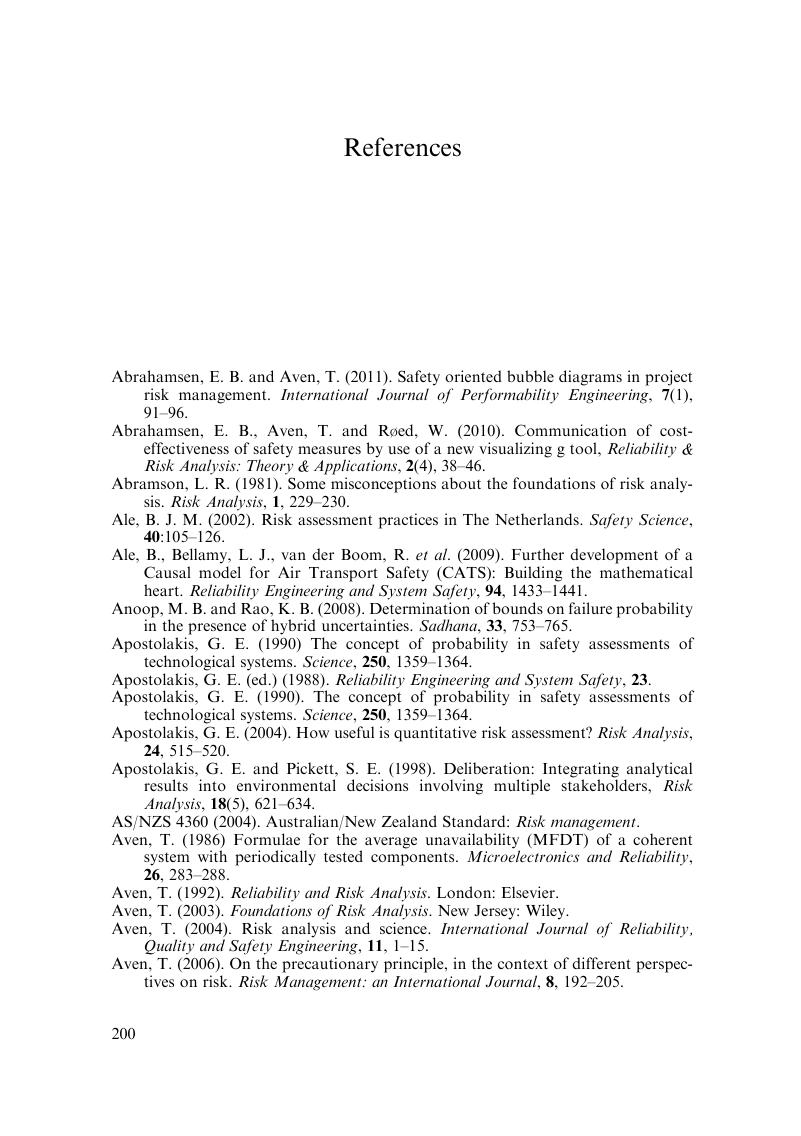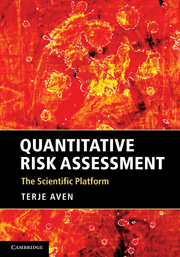Book contents
- Frontmatter
- Contents
- Preface
- Acknowledgments
- 1 Introduction to risk management and risk assessments. Challenges
- 2 Concepts and perspectives on risk
- 3 Science and scientific requirements
- 4 Introduction to case studies
- 5 Risk assessment when the objective is accurate risk estimation
- 6 Risk assessment when the objective is uncertainty descriptions
- 7 Risk management and communication issues
- 8 Towards a holistic scientific approach to risk assessment
- 9 Conclusions
- Appendix A Introduction to probability theory and statistical analysis
- Appendix B Terminology
- References
- Index
- References
References
Published online by Cambridge University Press: 05 June 2012
- Frontmatter
- Contents
- Preface
- Acknowledgments
- 1 Introduction to risk management and risk assessments. Challenges
- 2 Concepts and perspectives on risk
- 3 Science and scientific requirements
- 4 Introduction to case studies
- 5 Risk assessment when the objective is accurate risk estimation
- 6 Risk assessment when the objective is uncertainty descriptions
- 7 Risk management and communication issues
- 8 Towards a holistic scientific approach to risk assessment
- 9 Conclusions
- Appendix A Introduction to probability theory and statistical analysis
- Appendix B Terminology
- References
- Index
- References
Summary

- Type
- Chapter
- Information
- Quantitative Risk AssessmentThe Scientific Platform, pp. 200 - 209Publisher: Cambridge University PressPrint publication year: 2011



